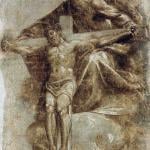Greeks expressed their gratitude, FS Naiden notes (Smoke Signals for the Gods), with sacrifice: “Helliodorus, hellenizing his Phoenicians, says that Tyrians used such a formula after one of their number won at the Pythian games. Returning home with the victor, they sacrificed at the seaside, niketerion and charisterion, ‘thanks for victory,’ although this translation misses the reverence the worshipers would express. Many such sacrifices occurred not after a victory, as at the festival of Artemis Agrotera in Athens, but after... Read more



















